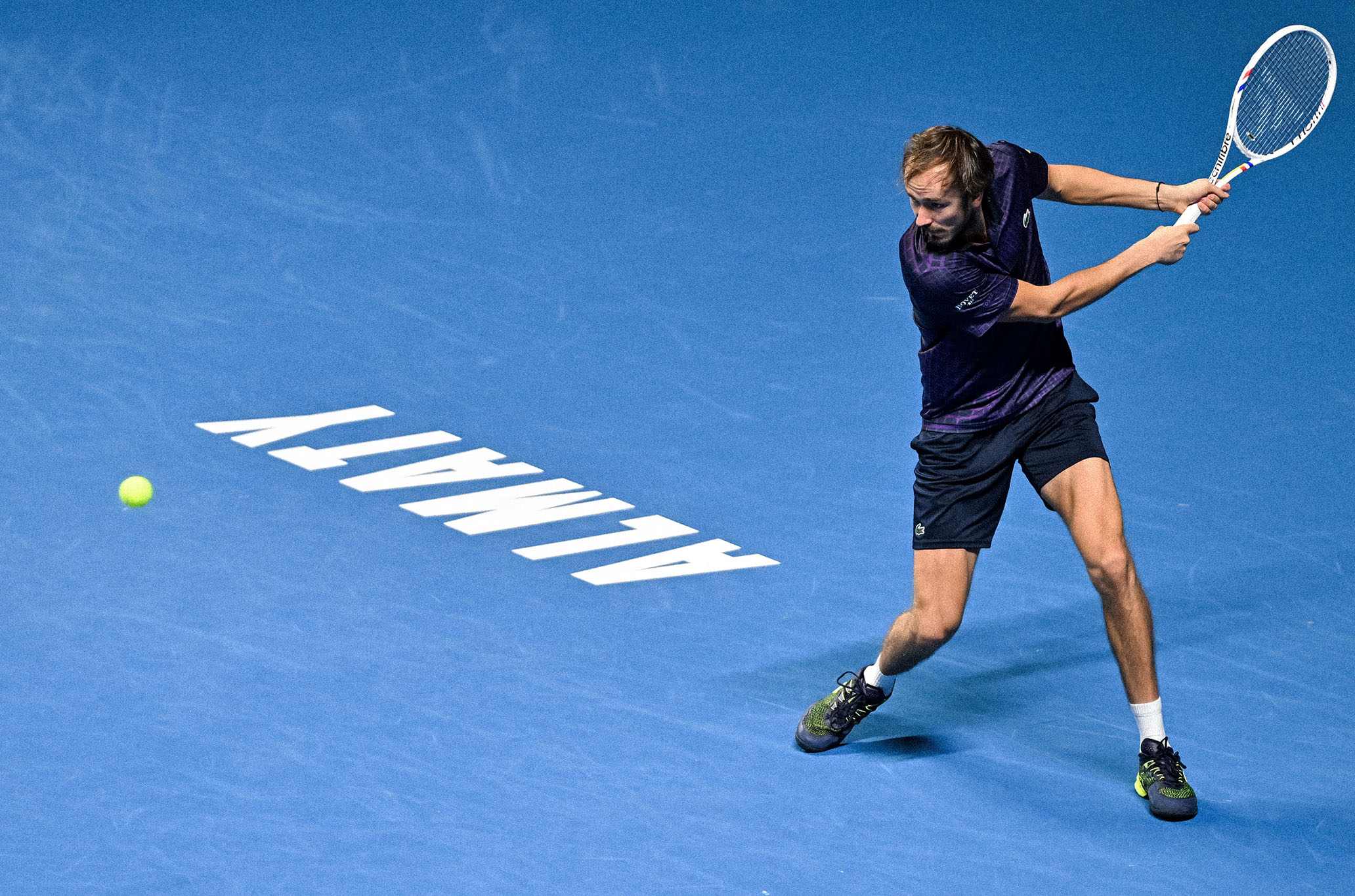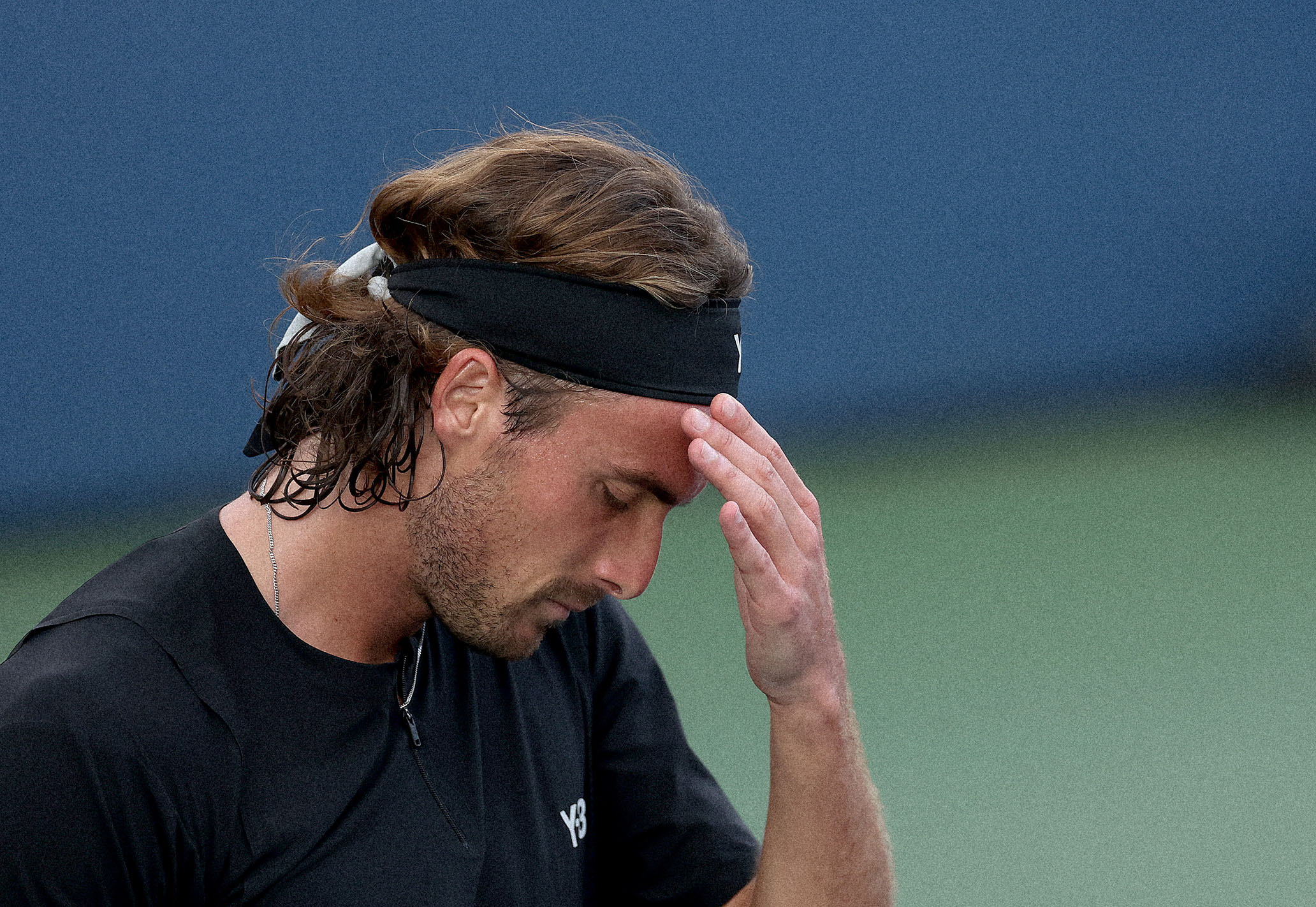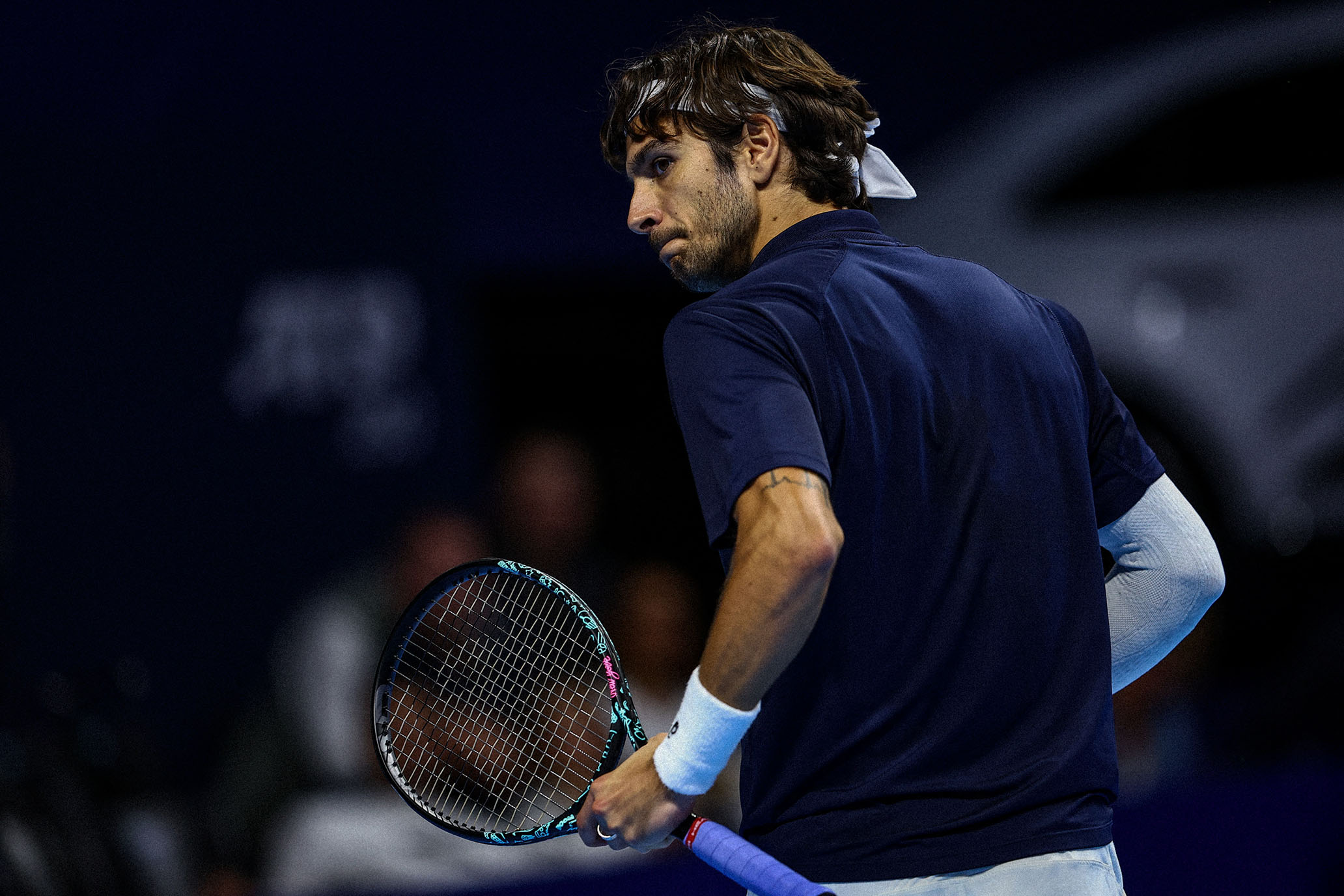Oh, Sister
Oh, Sister
Siblings Mirra and Erika Andreeva clash for the first time, in Wuhan.
Siblings Mirra and Erika Andreeva clash for the first time, in Wuhan.
By Giri NathanOctober 10, 2024
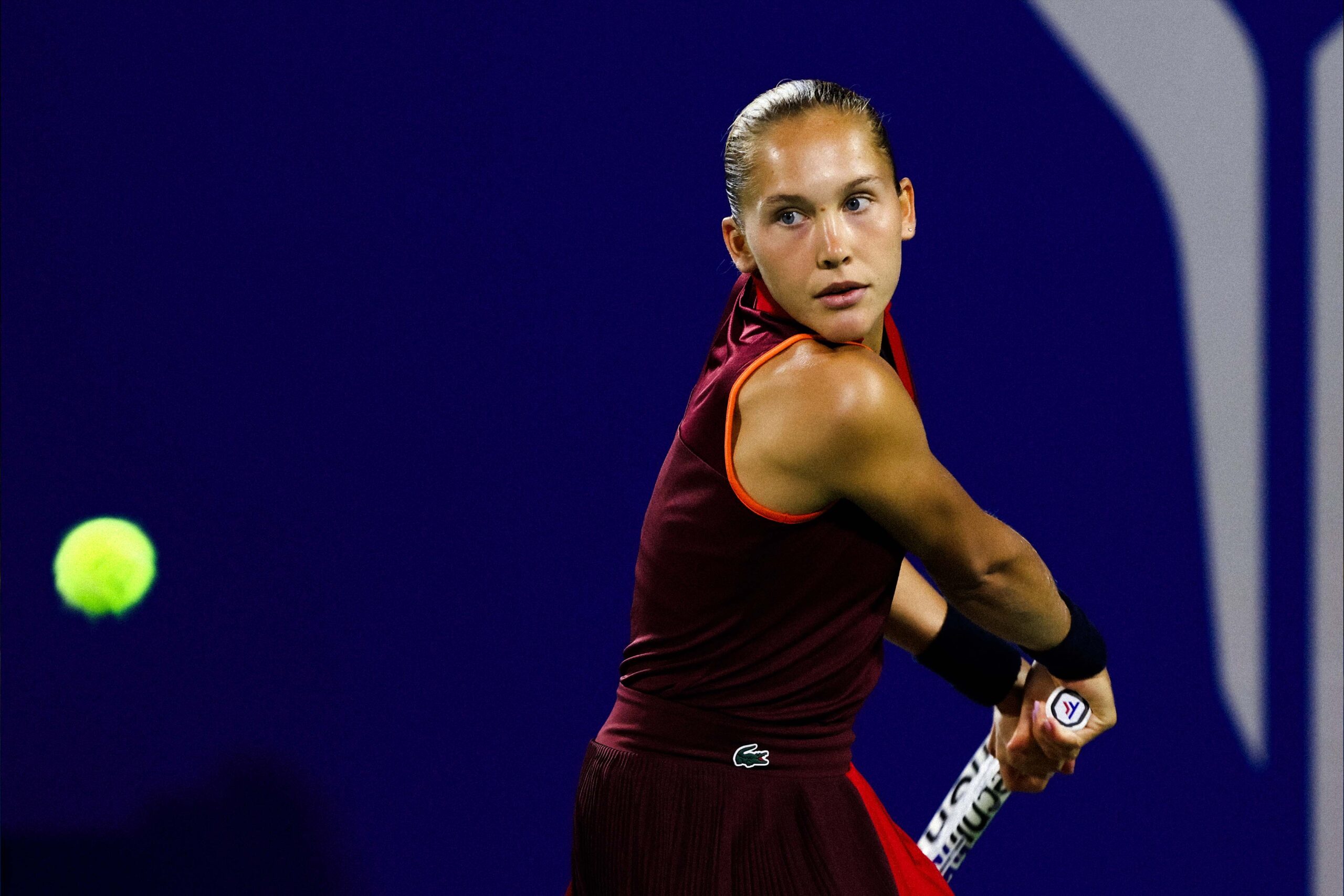
Erika Andreeva during her Round of 32 match against sister Mirra in Wuhan this week. // Getty
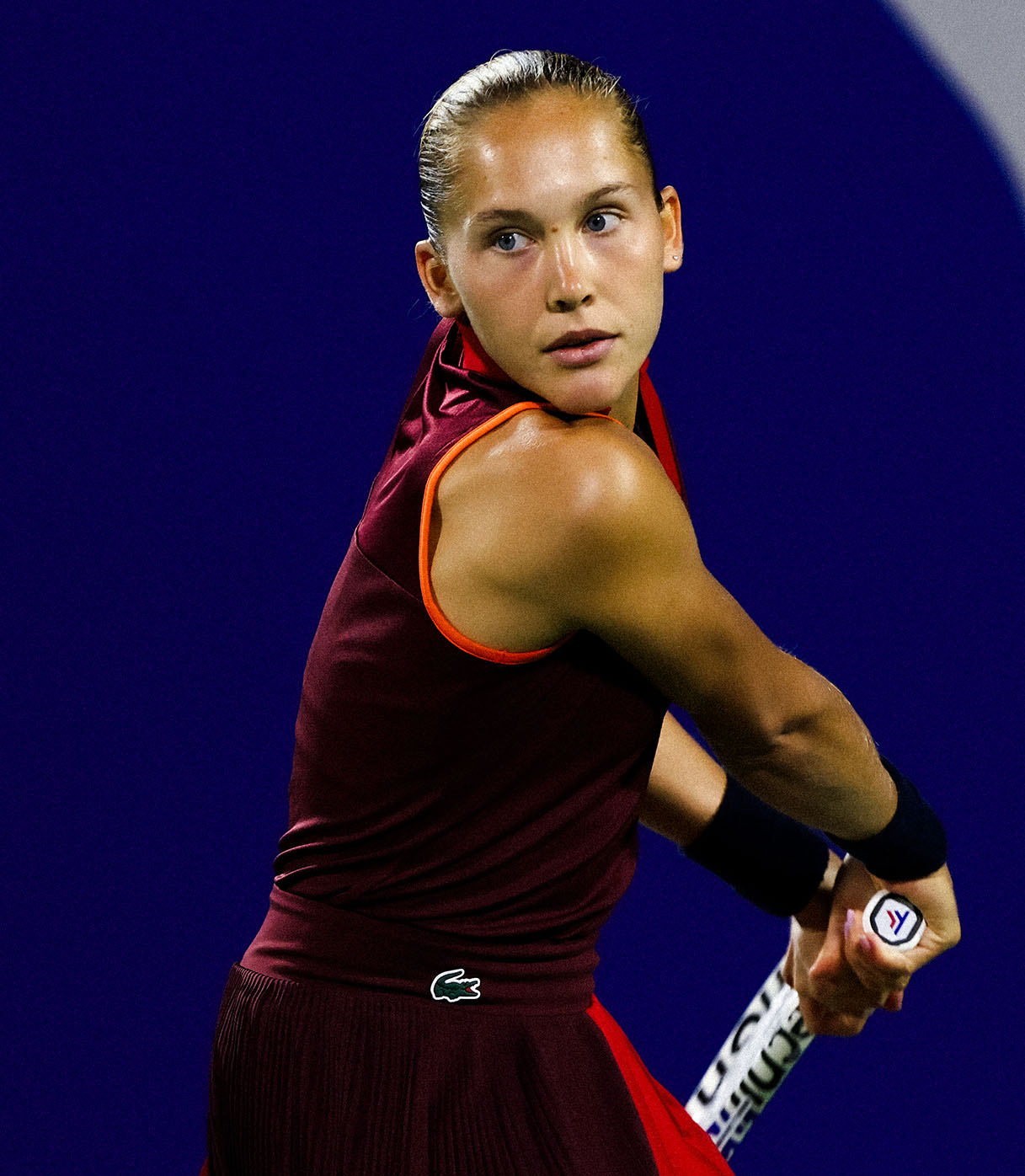
Erika Andreeva during her Round of 32 match against sister Mirra in Wuhan this week. // Getty
Younger siblings are usually the better tennis players, aren’t they? What a structural advantage, to spend so many formative years hitting with someone older and better, honing those ground strokes with pure spite and a hunger for affirmation. Can’t teach that.
Erika Andreeva is an excellent tennis player, ranked No. 70 in the world as a 20-year-old. If only she didn’t have to compete on the same professional plane as her 17-year-old sister, Mirra, one of the WTA’s best prodigies in more than a decade. This week, Mirra rose to No. 19 in the world, which made her the youngest player to enter the top 20 since Nicole Vaidasova did it in 2006. Teenage stardom has grown scarcer as the sport has gotten more physically taxing, but Mirra is the rare player with the technical chops to already beat veterans at this embryonic stage, without much of a serve. Mirra also seems to peak at the biggest tournaments, as proven by her incredible 15–7 record at Slams; she made the Roland-Garros semifinal this year by absorbing the power of Aryna Sabalenka. Mirra is bubbly and funny in interviews, and also slightly terrifying. “Fourth round is nothing,” she said, immediately after arriving at that stage of the Australian Open earlier this year. What kind of 16-year-old says that? Only one intent on crushing everything in her path.
Unfortunately for Mirra, it was her sibling Erika who appeared in her path for their second-round match in Wuhan on Wednesday. The two sisters were coming at the match from quite different angles: Erika lost in the qualifying rounds and only slipped into the main draw as a lucky loser; Mirra was slotted in as the No. 16 seed. While there are a couple pairs of siblings on tour, they haven’t recently collided. The WTA’s most recent sister matchup is still its most iconic: Venus and Serena, in 2020, at the modest Lexington tournament. (Serena won it, ending her career with a 19–12 all-time edge.)
The Wuhan match was unfamiliar territory for the sisters Andreeva. It wasn’t just that they hadn’t yet played each other in an official pro setting. Mirra said that she and Erika hadn’t even played a casual practice match in “three or five years.” That’s because they seem to struggle to find a “casual” register as far as tennis is concerned. The siblings have intentionally resolved not to talk about tennis off the court, and while they do practice together, they never play points, sets, or matches. It unnerves them: “For example, if she does a lot of mistakes or I see she’s unhappy or worried, I start to be worried for her, then I cannot play normally. When she sees that some bad stuff happens to me, she cannot play normally, she cannot practice,” said Mirra, who previewed this matchup as a “nightmare.” When they were kids, Erika always won their sets, Mirra said last year; Erika countered by observing that the age difference is far more consequential at a young age. Now Mirra is the taller one and has enjoyed greater overall success as a pro. Maybe these facts would give her the edge she lacked as a tot.
Or maybe not. Just as Serena lost her first five matches against Venus before taking control of the rivalry, the junior Andreeva might still be coming up against a decade-old mental block. Mirra has the occasional fiery moment on court, but for the most part I’m astonished by how well she holds her composure in huge matches. Still, there’s nothing like a deep-seated family rivalry to make a tennis player revert to their actual tiny age. Though she had a break point to go up 4–1 in the first set, Mirra lost the set 3–6 from there and promptly blasted a ball into the stands in frustration. In the second set Erika took over, claiming her third match point to win 6–3, 6–1 in a mere 90 minutes. There was no visible celebration, just a sober and sincere hug at the net.
Apparently their deep familiarity with each other’s games turned the contest into a kind of game-theoretic puzzle. “I know where she will most possibly go, and she as well,” said Erika after her win. “Sometimes during the rally I was like, ‘Normally I go there, but I know that she knows that I go there,’ and I changed my decision. I’m not sure that was the best choice sometimes.” Overall, though, Erika clearly made enough of the right calls to take the edge in what will hopefully be a long-running head-to-head. I say “hopefully” for the tennis fans—there were some really wonderful rallies in this one—if not for the Andreeva nuclear family. At least the sisters worked out an arrangement ahead of their stressful contest: They decided to split their prize money from the second round. Sharing is caring, now and forever.


The Hopper
—CLAY Tennis on Beatriz Haddad Maia’s US Open run.
—Giri on Iga Swiatek’s loss to Jess Pegula.
—Jon Wertheim’s mailbag is full this week.
—Sara Errani and Andrea Vavasori have won the US Open mixed doubles.
—Tim Newcomb on Taylor Fritz and Asics.

